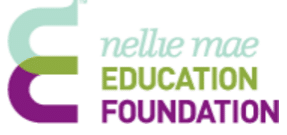Nellie Mae Education Foundation Statement on ESSA
CompetencyWorks Blog
 This statement was released by the Nellie Mae Education Foundation on December 11, 2015.
This statement was released by the Nellie Mae Education Foundation on December 11, 2015.
President Obama signed the Every Student Succeeds Act(ESSA) into law yesterday. This response to No Child Left Behind (NCLB) – the 2002 rendition of the historic Elementary and Secondary Education Act (ESEA), which first passed in the civil rights-rich 60’s, was long overdue. Our experience with NCLB made it clear that a rewrite was needed based on what we have learned about the limits of an approach to school improvement driven by high standards, measured by narrow assessments and provoked by mostly uninteresting, remedial consequences.
From our perspective at The Nellie Mae Education Foundation, the new law holds great promise for advancing public education, as one of its explicit aims is to grow, spread and improve innovative, evidence-based, student-centered approaches to learning – where learning is personalized, competency-based, dependent on strong student ownership, and not limited to traditional classrooms or classrooms at all. This is good news.
We also believe that there are aspects of this new direction that demand vigilant attention. As we open up opportunities for creativity in terms of educational design, we must make sure that we organize for universal attainment of deeper learning outcomes and do not unintentionally leave more learners behind in the process.
If our nation is going to advance, we must be sure that creative learning designs are effective ones, including in our poorest communities. We must ensure that we are elevating the learning and readiness of graduates of all colors in all zip codes to combat the growing economic inequalities that are so pervasive across our country. While the move to state-owned responsibility and district-based accountability may be the way forward, as advocates of equity it leaves us uneasy, even as it replaces the untenable approaches to securing equity in NCLB.
ESSA mandates a big shift toward balancing shared responsibility, as the law moves significant decision-making about responses to low performance to the district level guided by state authority. However, the distribution of authority to the local level will demand capacity-building so that local communities can meet those responsibilities. Today most districts do not have the capacity to do so, as so much energy has been directed to a compliance-based framework. This is an issue any advocates of dramatic, equitable change and improvement will care about. It is one thing to open up opportunity. It is another to be able to fully, expertly and responsibly take advantage of the opportunity. Wealthy districts may be able to meet the challenge even if they do not need to, while those who must cannot without support.
On the positive side for student-centered learning advocates, the law includes opportunities for more states to follow the lead of what many in New England have been pursuing for years – personalized, competency-based approaches. It also allows for research supported approaches. This is no accident. One can see echoes of good, innovative work from Rhode Island, Vermont, Maine, Connecticut and particularly New Hampshire in many passages of ESSA. New England should be proud.
While the law maintains many of the requirements for annual testing, it is importantly coupled with greater flexibility to states in the choice and design of those assessments, and how to appropriately hold its public schools accountable. Additionally, the law explicitly provides room for more creative, developmentally appropriate, and meaningful assessment systems by establishing pilot opportunities for innovative, performance-based approaches. Opened initially for up to seven states, and informed by much of what has been learned by education pioneers living and working in the northeast, we believe the six New England states are well positioned to be home to at least one of these initial seven pilot sites. Whether or not our region’s contributions will lead to further concentration of federal dollars here or not remains to be seen.
As it moves leverage closer to the ground, ESSA endorses the notion that local democratic processes must be respected. In a region where there are strong experiments around how to focus a future orientation for readiness through direct public dialogue versus a backward attempt at repair through federal mandate, ESSA provides an immediate chance to provoke a broader deliberation around the purposes of education. This means we have a chance to push the pendulum back from viewing public education’s main purpose as one of competition among individuals, toward the purpose of readying all our K-12 students for success in post-secondary education so our communities prosper economically, civically and socially.
It is this fundamental public review of the core purposes of public education – along with an embrace of the notion that public education is an essential public good – that will allow this law to be the game changer it needs to be versus the repair job it had to be. If core cultural issues such as these are left unattended, new approaches will only lead to familiar results.
At the Nellie Mae Education Foundation, we look forward to working with many others to make sense of this law, make the most of it and keep an eye on its imperfections so that we can move forward productively and positively toward strong systems of public education characterized by rigorous, equitable student-centered approaches. In this way we can leverage a long overdue policy change to secure a strong future for all New England learners and communities.
Nick Donohue
President & CEO
Nellie Mae Education Foundation